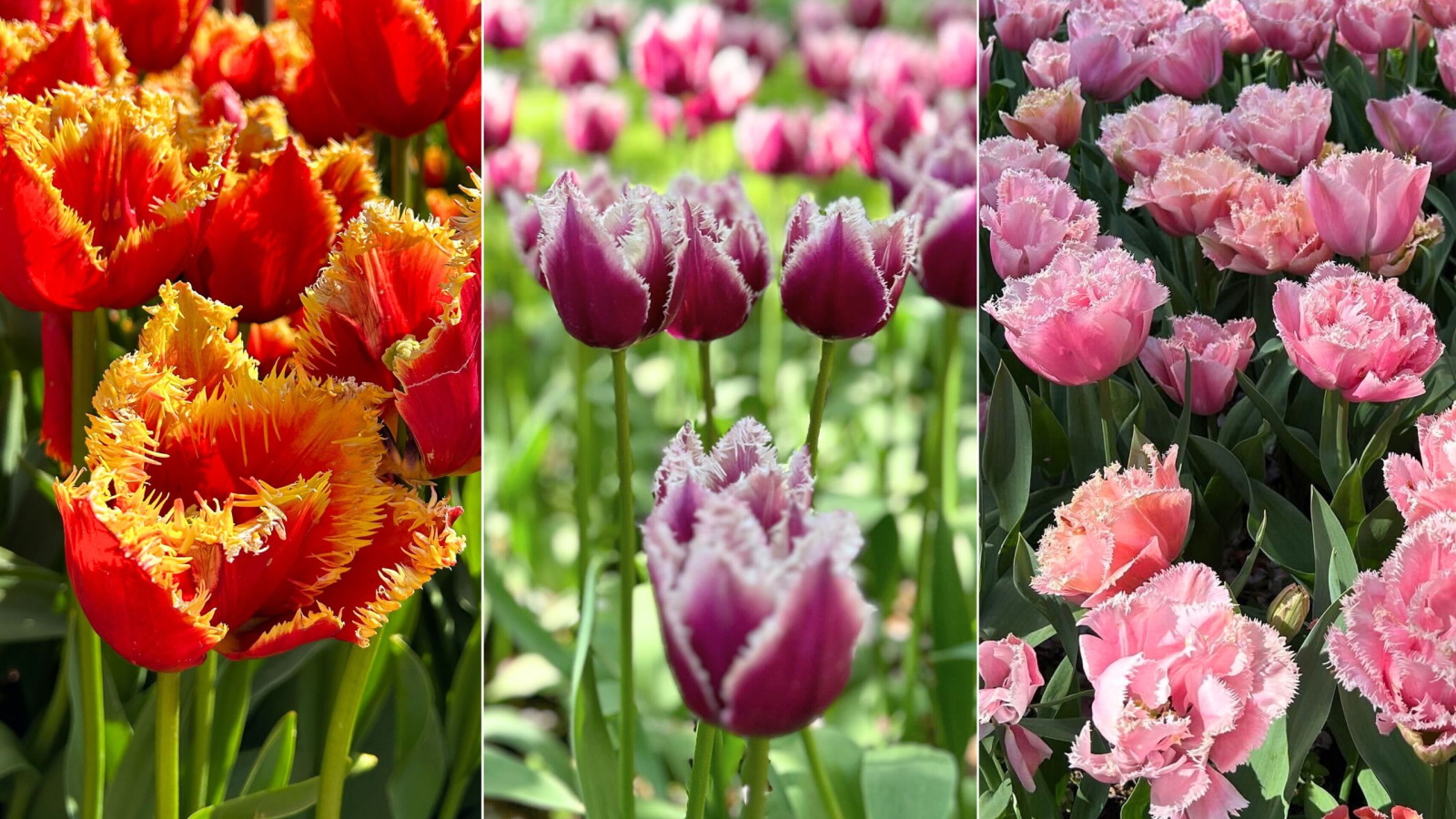
This spring, I took a trip to The Netherlands to see one of the greatest displays of tulips - Keukenhof's tulip festival. Tulips have always topped the list of my favorite spring bulbs and seeing them planted en masse - approximately seven million bulbs - was truly breath-taking. What I didn't expect was to walk away with was a newfound love for fringed tulips.
I'd never seen as many types of tulips in one place as I did when I went to Keukenhof and the fringed tulips instantly caught my eye. Also known as parrot tulips, these bulbs are identifiable by their serrated petals that add a softness to their appearance. I was fortunate enough to visit a Dutch grower's nursery during my visit where I learned these dazzling beauties aren't hugely popular in either the US or the UK. This is perhaps because they aren't obvious choices for a cottage garden style where tulips are often grown.
However, now that I've seen just how impressive these unique flowers are in full bloom, I've been converted. Here, I've put together a list of the best fringed tulip varieties just in time for fall planting, so that you can create your very own fringed tulip extravaganza in your yard.
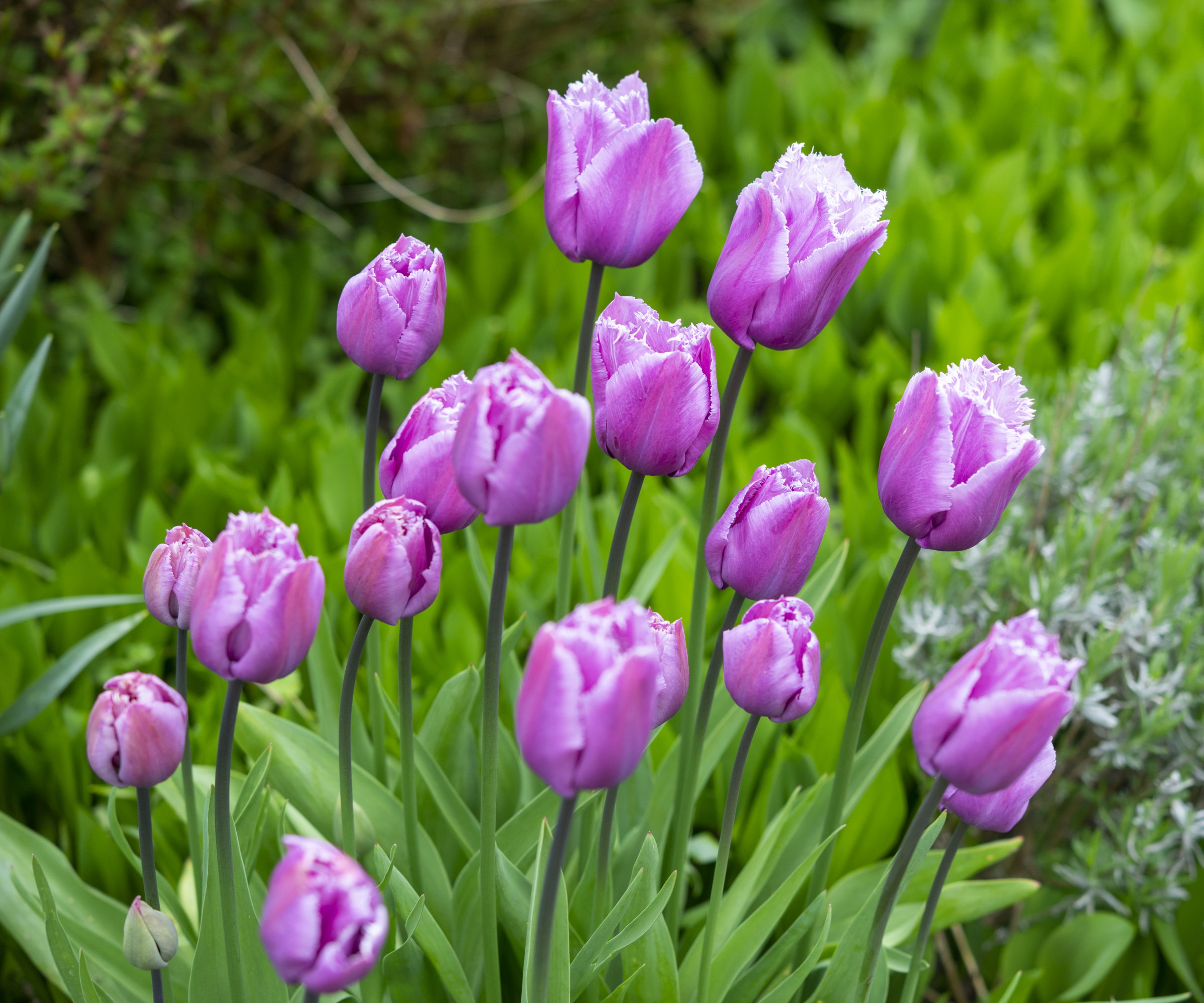
7 stunning fringed tulip varieties
Unlike the majority of tulips that are native to southern Europe and central Asia, parrot tulips were purposely cultivated to achieve their feathery petals. The first parrot tulips appeared in France in the 17th Century and have now become an adored member of the tulip family.
For the most part, fringed tulips can be grown across US hardiness zone three to zone eight, thriving in sunny positions. If the idea of growing fringed tulips excites you but you aren't sure where to get started, look no further. Here are seven of the best fringed tulip varieties to get you started.
1. Tulipa 'Fabio'
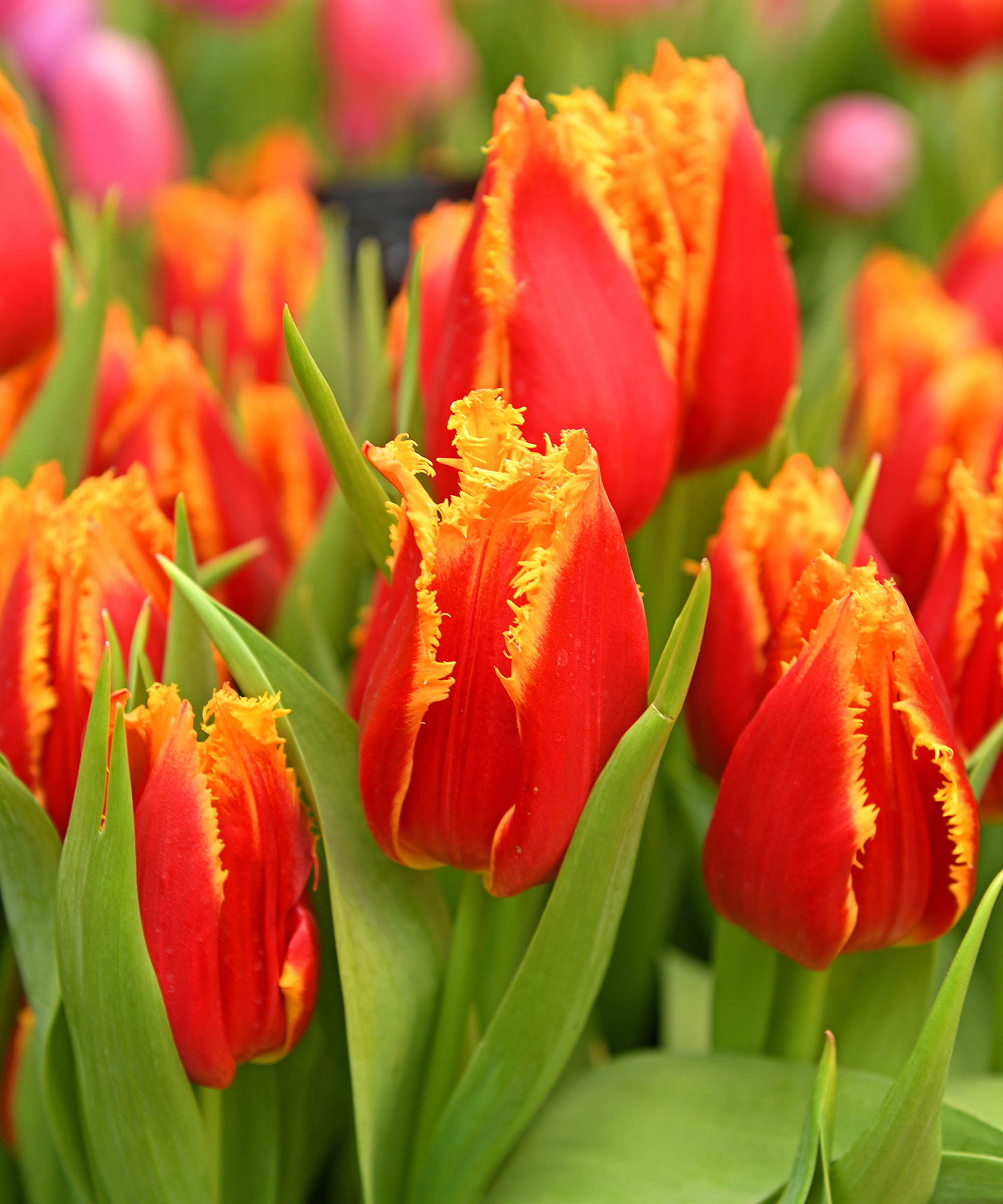
Not only are parrot tulips attractive for their feathery edges, but they also often have two-tone coloring. T. 'Fabio' is an excellent example of this, with vibrant red and orange-yellow hues.
'This two-toned tulip features vibrant red petals adorned with a striking yellow feathery fringe. Its bold and eye-catching appearance makes it a perfect choice for bright and colorful garden settings, especially when paired with complementary blooms like orange African daisies or snapdragons,' says garden designer Laura Janney.
Unlike early-spring flowering plants, fringed tulips tend to bloom later in the season. 'One of the best things about these flowers is that they are late bloomers,' says Laura. 'This characteristic allows them to mingle with mid-spring perennials, creating a harmonious blend of colors and textures in the garden,' she adds.
Just like planting tulip bulbs of other types, it's best to plant fringed tulip bulbs in fall before frost. Take care to plant the bulbs in well-draining soil where they will get plenty of sunlight.
You can buy 'Fabio' bulbs at Amazon.
2. Tulipa 'Fancy Frills'
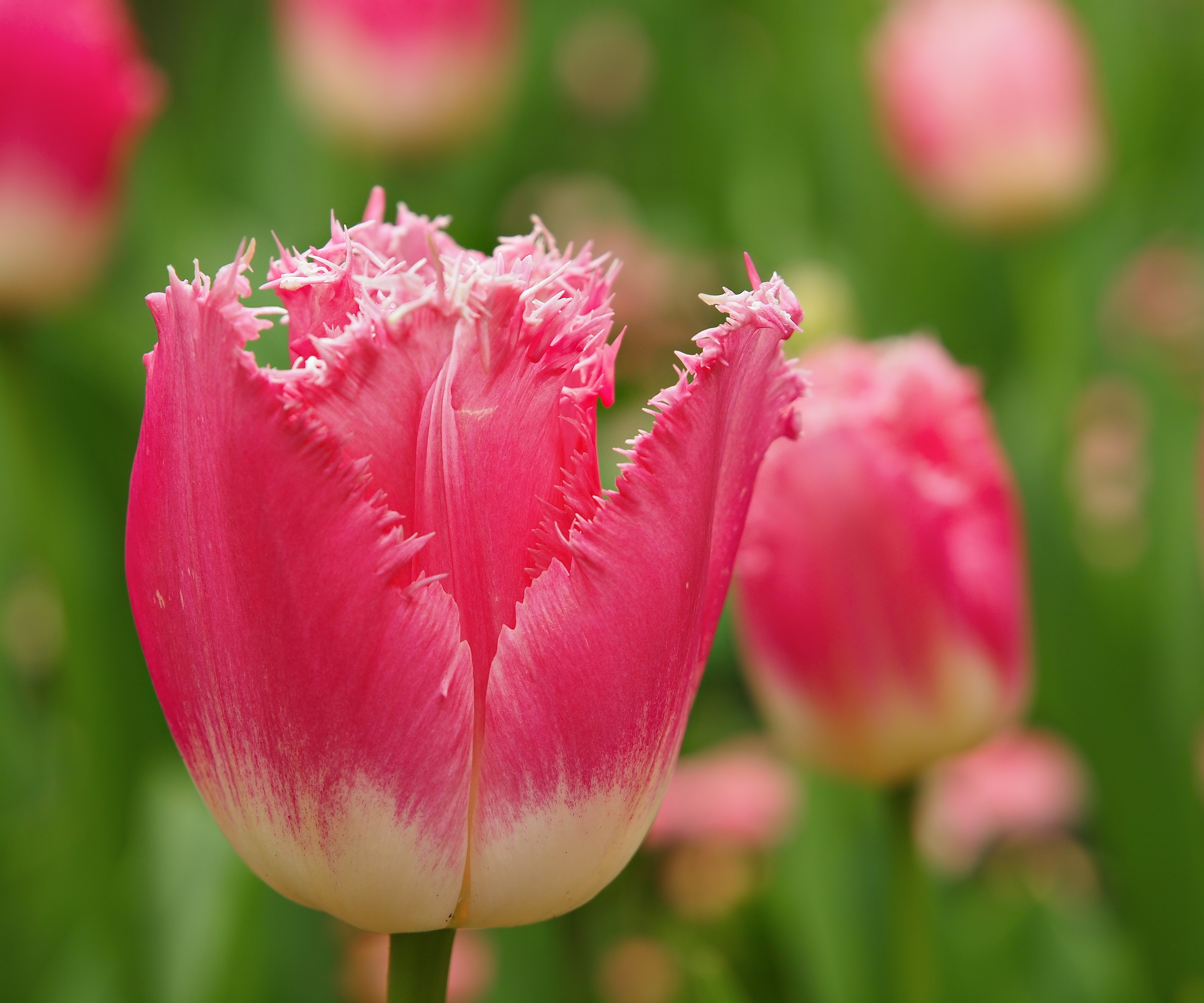
I personally love the look of tulips in containers and to get an instant spring feel, there is no better choice than a pink fringed tulip. T. 'Fancy Frills' is beautiful parrot tulip in a hot pink hue.
'With creamy white petals blending into soft pink hues and delicate white fringed tips, this tulip exudes elegance,' says Laura. 'Ideal for cottage gardens with a soft color palette, it complements other cottage garden plants beautifully,' she adds.
As with other tulips, it's easy to plant these bulbs in pots. In fact, tulips often benefit from container gardening where containers have drainage holes. This is something to consider if you're planning a cut flower garden with parrot tulips.
Find 'Fancy Frills' bulbs at Amazon.
3. Tulipa 'Sugar Crystal'
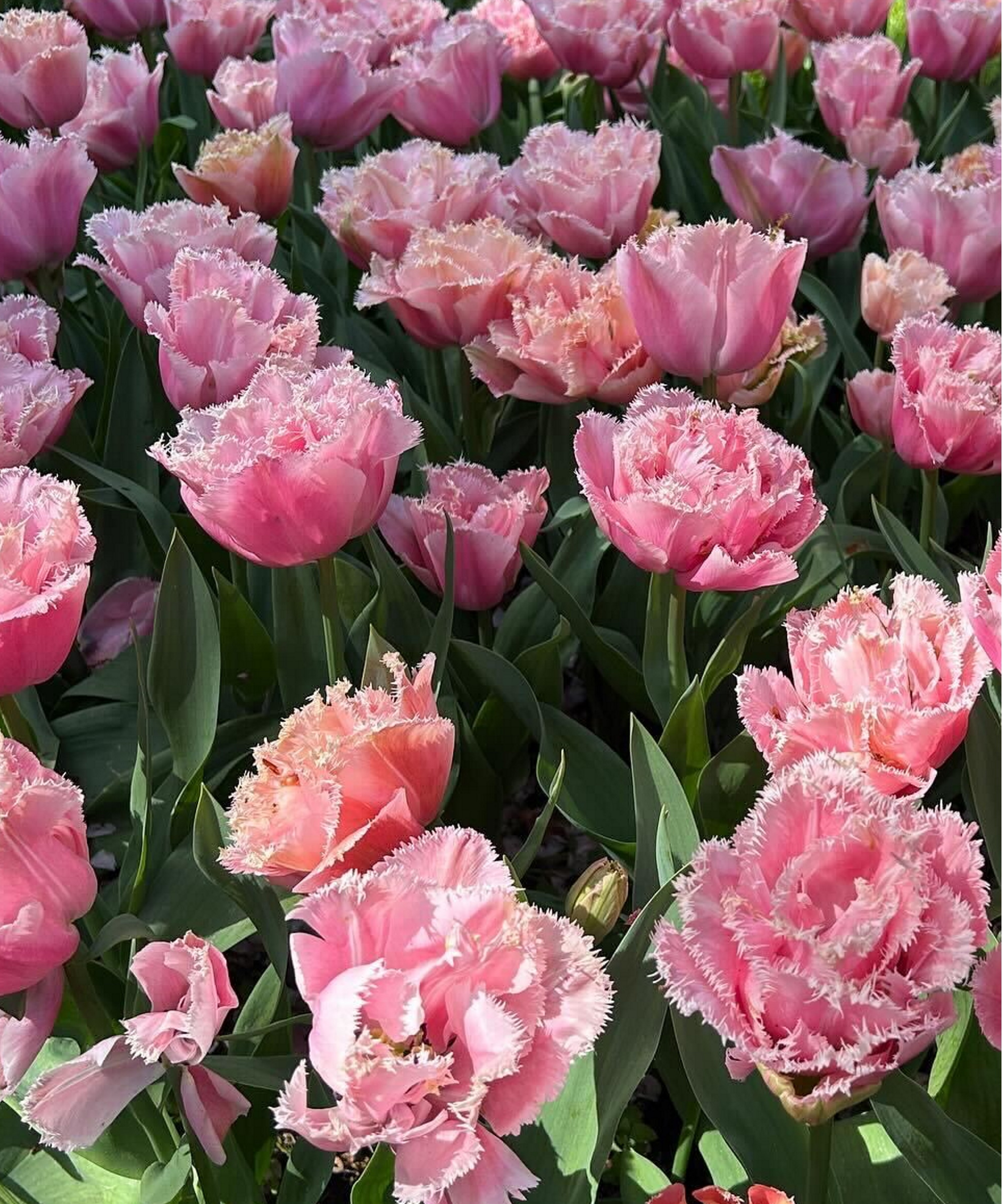
This double-fringed tulip is one I become fascinated with in The Netherlands, thanks to its pastel color and abundance of petals giving it a fuller look.
There's no doubt that 'Sugar Crystal' is a high-impact bulb - the layers of feathered petals simply wows, especially when planted en masse like in the above image.
You can grow this mid-spring flowering bulb in a range of ways. 'Fringed tulips boast intricate and elaborate appearances, making them true showstoppers in any garden,' says Laura. 'To truly highlight their striking beauty, consider either sticking to a single color palette,' she suggests.
It's also possible to grow tulips indoors and there's no denying this fringed tulip would instantly brighten your interiors.
4. Tulipa 'Cummins'
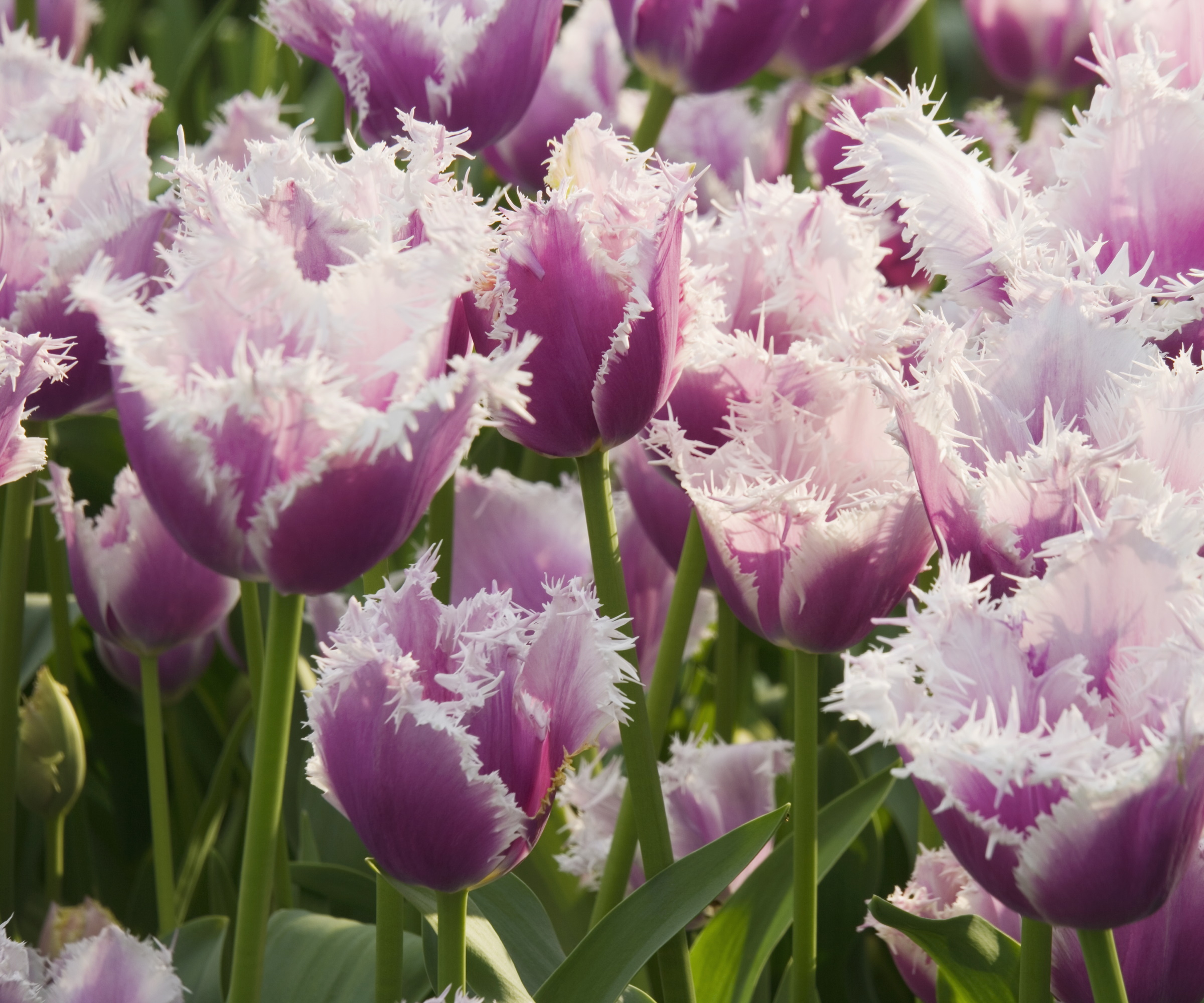
If you have a purple color palette in your yard and are looking for a unique purple plant to add to your display, look no further than T. 'Cummins.' It has a powdery purple hue and a crisp white fringe.
'I love 'Cummins' as it matches the color of my lavender garden,' says Lisa Fontanarosa, a lavender expert and grower based in Albuquerque, New Mexico. 'I love to pair them with double late tulips, single late tulips and other parrot tulips,' she adds.
As Lisa notes, the purple shade of this parrot tulip is perfect as a lavender companion plant or even lavender alternative - plus, they thrive in a sunny spot alongside lavender plants.
'Cummins' bulbs are available at Walmart.
5. Tulipa 'Mecure'
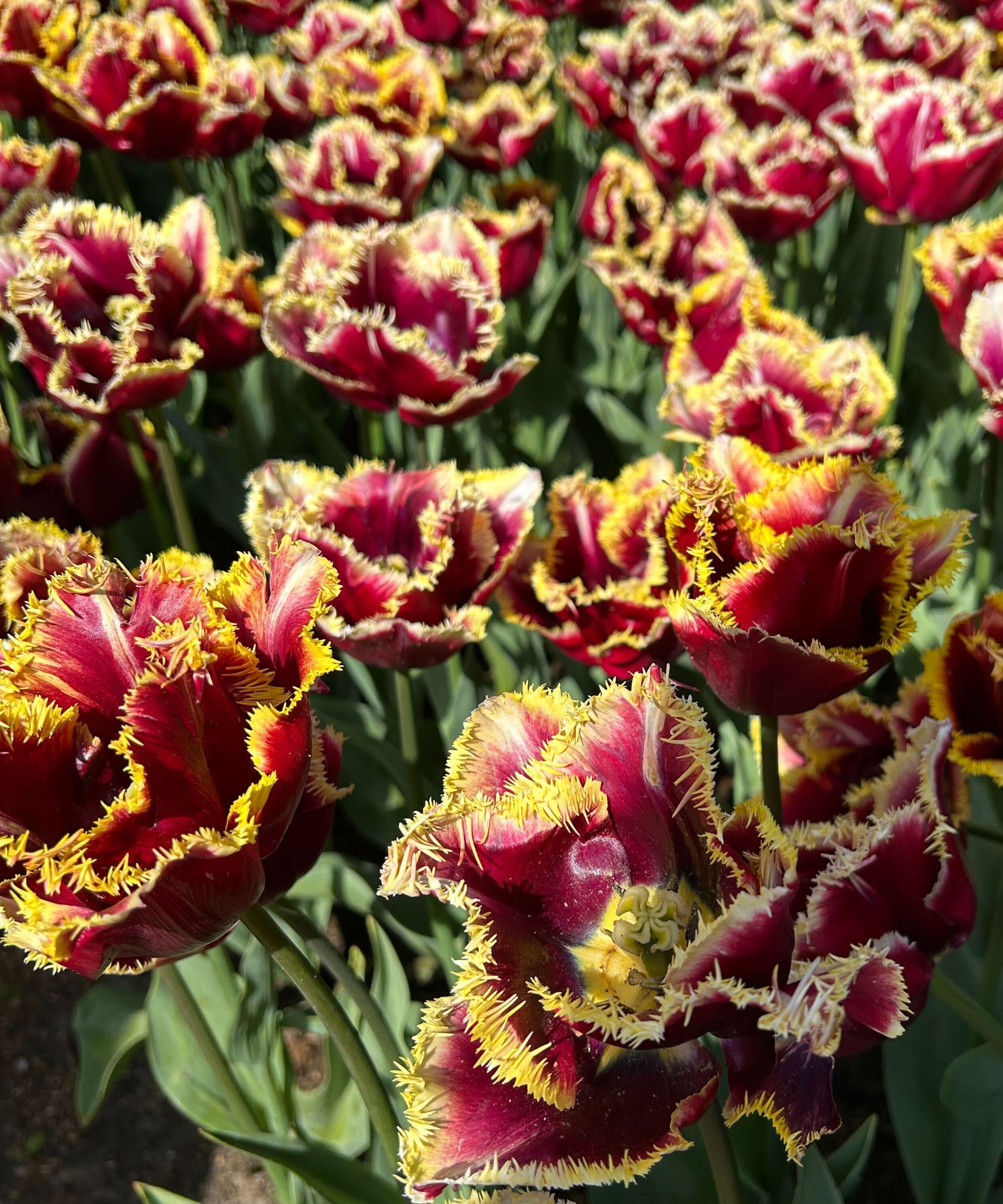
Creating a garden full of unique plants that intrigue visitors is a dream for many gardeners, and T. 'Mecure' fits the bill as an unusual bulb to plant in fall.
'Featuring deep pink to burgundy petals with golden fringes, this tulip offers a captivating and unconventional look, making it a standout choice for modern garden designs,' describes Laura.
The deep color of this parrot tulip makes it a brilliant addition to dark planting scheme, like alongside shrubs with dark foliage. Grow them in a sunny spot to keep them happy and show off their burgundy tint.
6. Tulipa 'Honeymoon'
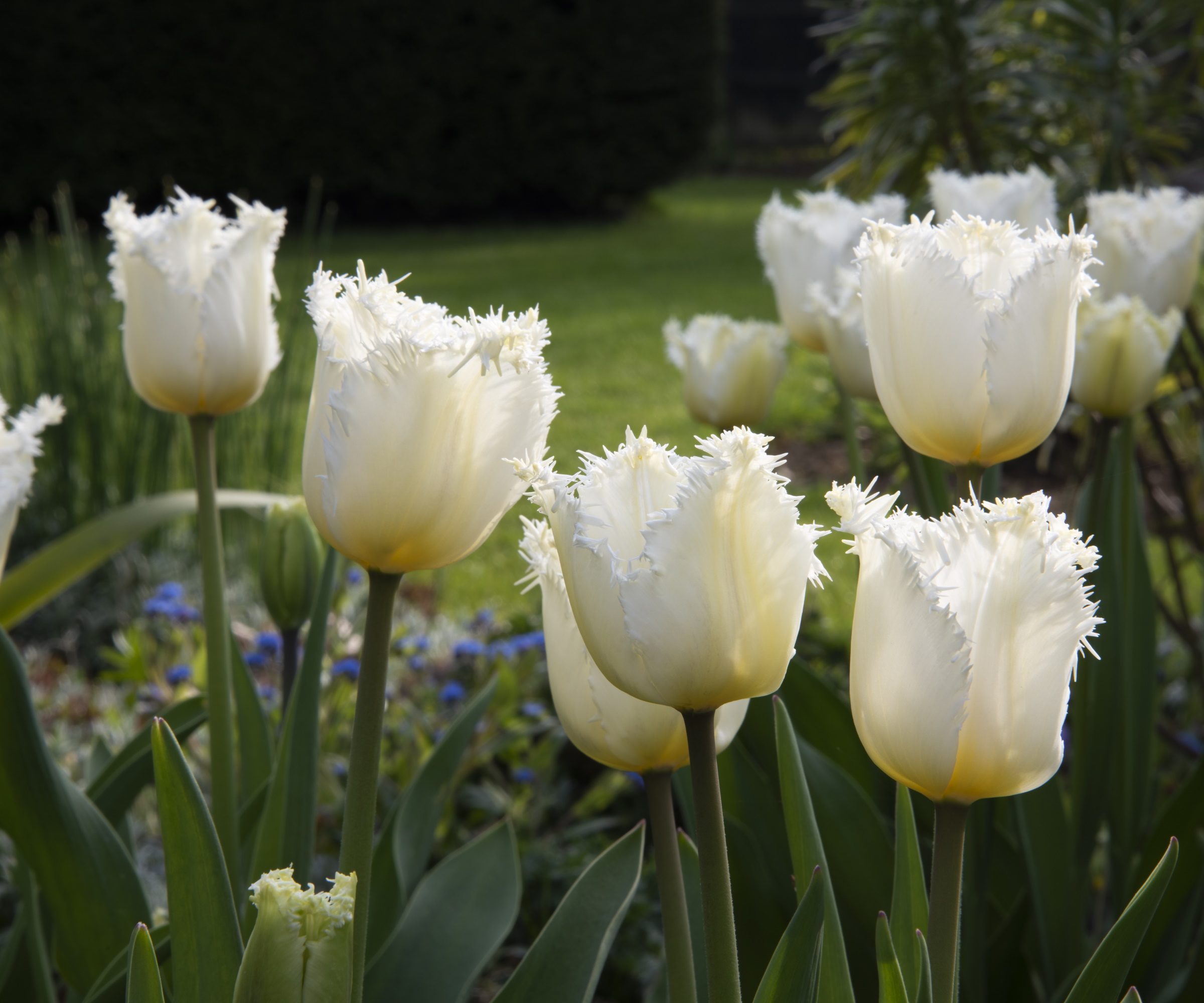
Sometimes you need to add some simplicity among elaborate planting, which is exactly what the single fringed tulip 'Honeymoon' achieves. White flowers are classic and the fringed edges of this tulip enhances the sophistication it brings to an outdoor space.
Dot 'Honeymoon' tulips among mass planting of colorful tulips to uplift your display. Alternatively, create a powerful showcase by using this parrot tulip in your white garden.
To keep your 'Honeymoon' tulips (available at Burpee) looking pristine, as well as your other fringed tulips, choose a position that is sheltered from strong wind.
7. Tulipa 'New Santa'
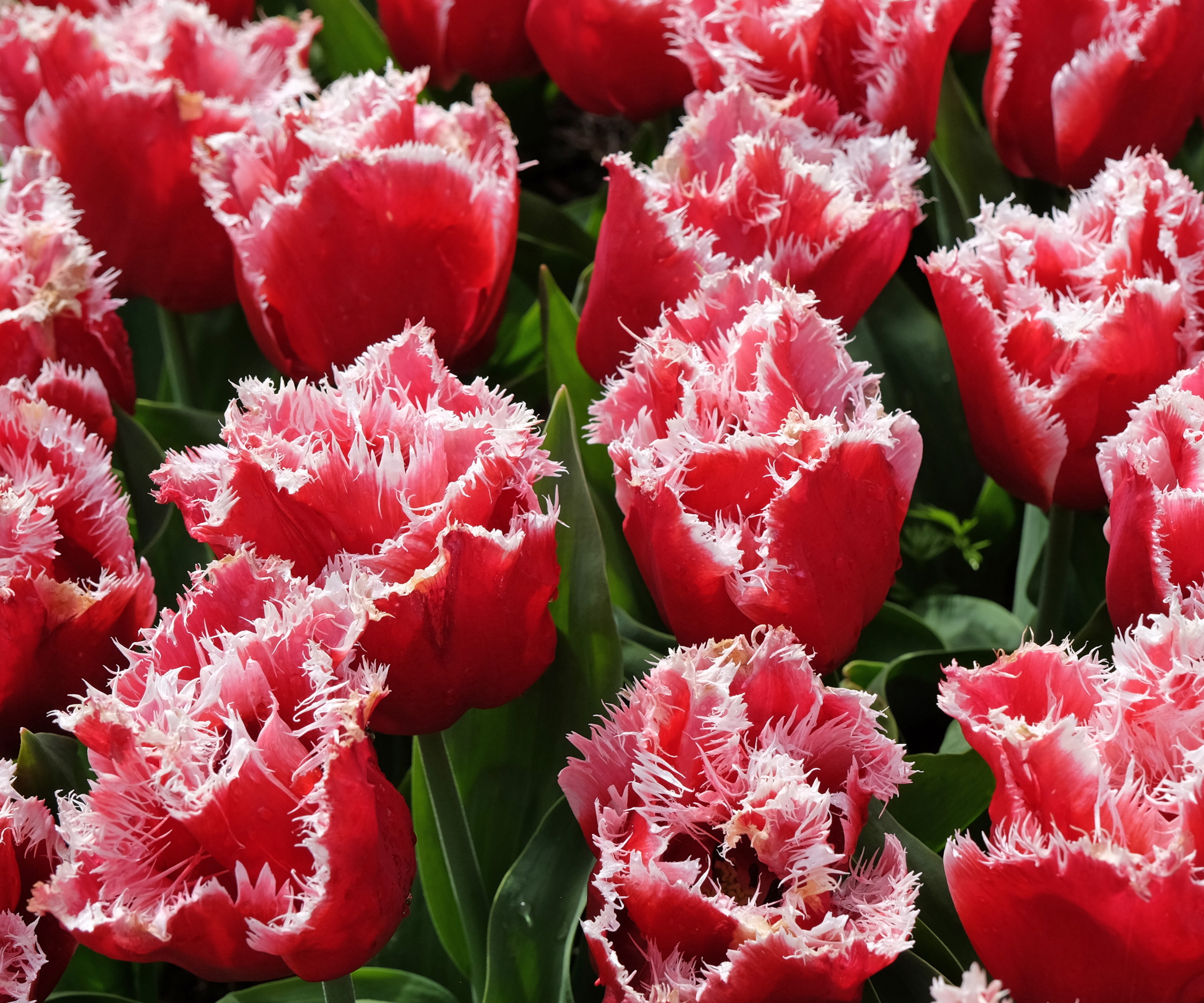
In my opinion, I've saved the best for last. T. 'New Santa' is the parrot tulip I found myself gravitate to at the Dutch tulip festival. It's strong red petals topped with a pure white fringe is reminiscent of strawberry candy and is the ideal fringed alternative to the single tulip 'Leen van der Mark.'
'Boasting vivid red blooms adorned with white feathery tips, this tulip lends a romantic charm to garden settings,' says Laura. 'Pair it with purple blooms like irises and bachelor buttons for a visually captivating display,' she explains.
For me, it's a must to have these bright blooms in a spring garden. Lisa Fontanarosa notes there are other similar varieties you can pair them with: 'My favorite is 'Flaming Club.' It's a beautiful red stripey tulip that is both pretty and fun. Just a few stems makes a lovely bouquet.'
For a yellow version of this tulip, opt for 'Burning Flame' from Burpee.
FAQs
How do you plant fringed tulip bulbs?
'For optimal results, plant tulip bulbs during the cooler months when night time temperatures range between 40-50°F,' says garden designer Laura Janney. When planting fringed tulip bulbs, plant them between six to eight inches deep with the pointed end facing up. A sunny, sheltered position is best and make sure to water them well to encourage the bulbs to settle and develop roots.
Do fringed tulips need fertilizing?
It can be beneficial to fertilize tulips to keep your bulbs healthy and productive. You can fertilize fringed tulips twice a year: once in spring when you see new shoots and once in fall when the bulbs are preparing to grow roots. 'You can also enhance soil richness by incorporating organic garden soil along with bone meal or bulb tone,' suggests garden designer Laura Janney.
There's no denying that fringed tulips are showstopping and their unique petals can enhance spring displays. After your tulips have flowered, make sure to cut back your plants and gently lift the bulbs from the ground. You can then store your tulip bulbs to replant in fall and enjoy their beauty again in spring.







